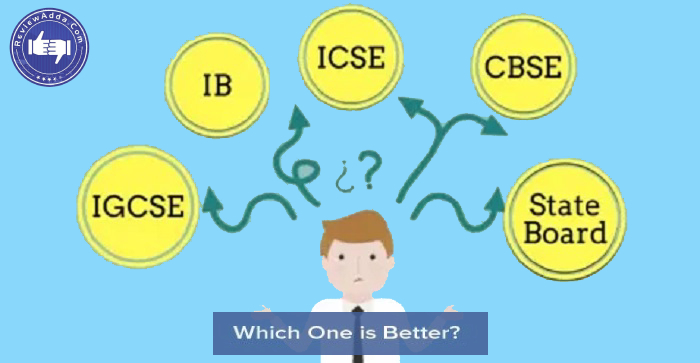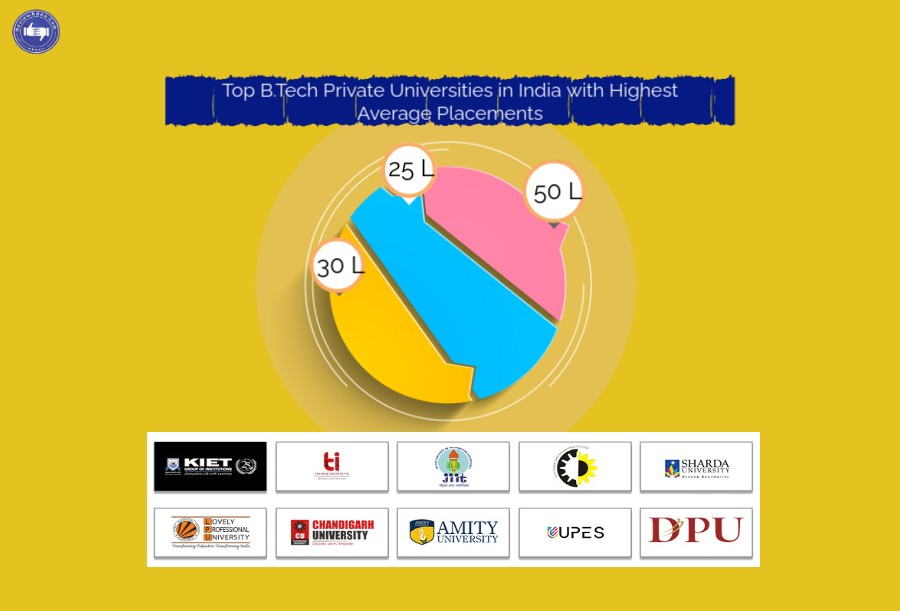Topic We Cover: CBSE Vs ICSE Vs IB Vs IGCSE Vs State Board
1. CBSE BOARD
- History of CBSE in Education
- What's New in CBSE Board Exams 2020
- CBSE Board Important Dates (Tentative) 2020
- CBSE New Exam Pattern For Class 12
2. ICSE BOARD
- What is ICSE?
- Affiliations
- Exam Pattern
- Grading Pattern
3. IGCSE BOARD
- What is IGCSE?
- Grading Pattern
- IGCSE Syllabus
- What is special about the IGCSE Board?
- Some IGCSE board schools of India
4. STATE BOARD
CBSE BOARD
The prime goal of the CBSE Board is to aid the Educational Institutions more adequately and efficiently and to be active to the educational requirements of those students whose parents were involved in the Central Government services and had repeatedly transferable jobs across the nation.

In India, an apex board of education is CBSE which is not only having a pan Indian jurisdiction but also has global presence with nearly 141 affiliated schools across 21 countries. CBSE allocates affiliation to Schools up to higher secondary level and flourishes common curriculum keeping nationwide requirements in focus. The CBSE affiliation is deliberate as an influential acknowledgement as it needs the schools to follow strict quality standards.
Through the regional offices that are set up by the CBSE, the body maintains educational standards across the country by monitoring the activities of these regional offices on a regular basis. These regional offices in various parts of the country take care of the day-to-day administration of the affiliated schools. Every year in the months of February and March, the CBSE Board organizes centralized examinations for 10th and 12th classes.
History of CBSE in Education:
In 1952, the CBSE was given its present name ‘Central Board of Secondary Education’, and in the year 1962, the Board was reconstituted. The Board provides affiliations to various schools and all of them have to follow the NCERT curriculum. The CBSE jurisdiction stretches all over India as well as beyond the national geographical boundaries of the country. The CBSE Board has seen rapid growth and expansion at the level of Secondary education resulting in improved quality and standard of education in institutions. From 309 schools under it back in 1962, the Board now has 21,271 schools in India, 228 schools in 25 foreign countries. There are 1,138 Kendriya Vidyalayas, 3,011 Government/Aided Schools, 16,741 Independent Schools, 595 Jawahar Novodaya Vidyalayas and 14 Central Tibetan Schools, as on May 1, 2019. With its effective and powerful educational policies, CBSE has changed the education system of the nation.
The CBSE Board exam of Class 10th is called All India Secondary School Examination (AISSE) and the board exams of Class 12th is called – All India Senior School Certificate Examination (AISSCE). In 2010-2011, CBSE made the board exams of Class X optional; however, from 2018 onwards the exam has been made mandatory for all students.
What's New in CBSE Board Exams 2020
- Main examinations to be conducted prior to vocational examinations
The central board has decided to conduct the main examinations before the vocational exams, opposite to the pattern which has been followed till now. The exam for the subject having the most number of students will be conducted first.
- Increase in the number of MCQs, reduction in descriptive questions
The number of multiple-choice questions in the board examinations in a majority of subjects will increase while the number of descriptive questions will be reduced.
- More internal choices
In order to make the assessment student-friendly, more internal choices will be provided in the examination.
- Practicals to be conducted at external centres
To encourage fair practice, the practical examination for both class 10th and 12th boards will be conducted at the external centres and not at the respective schools.
As per reports, the CBSE Board Exams 2020 will start as early as February 15, while the practical examinations will start in December 2019 itself.
CBSE Board Important Dates (Tentative) 2020:
|
Examinations (2020) |
Tentative Dates |
|
Release of CBSE Class 10th and 12th Date Sheets |
November/December 2019 |
|
Class 10th and 12th Practical examinations |
January 1 to February 7 |
|
Class 10th and 12th Main examinations start |
February 15, 2020 |
CBSE New Exam Pattern For Class 10
Let’s have a detailed look at CBSE New Exam Pattern for Class 10.
CBSE New Exam Pattern For Class 10: CBSE Internal Assessment
The total marks for internal assessment is 20 and it is divided into 4 divisions:
1) Periodic Test – 5 Marks: There will be a total of 3 Periodic Tests conducted for each subject. Among three Periodic Tests, an avg. of two tests will be taken for final compliance. The Period Test carries 5 marks out of the 20 marks for internal assessment.
2) Multiple Assesment – 5 Marks: Apart from the Periodic Tests, the CBSE has given authority to the School officials to conduct assessments in other modes depending on the subject. Multiple Assessments includes Group/Individual Assesment, Oral Test, Maps, Assignments, Graphics, Activities, etc., Multiple Assesment carries 5 marks.
3) Portfolio – 5 Marks: A portfolio is nothing but the work done by the student. This portfolio consists of the work done by the student and includes the efforts, progress, growth, achievements of the student. The portfolio includes the following elements based on which the student will be assessed:
- Design of the work: This includes neatness, visual appeal, and creativity
- Completion of guided work focused on specific curricular objectives
- Student’s knowledge
- Formation of all relevant work (Completeness)
This carries 5 marks.
4) Subject Enrichment Activities – 5 Marks: This carries another 5 marks and assesses the practical, project works and language skills of a student. The subject enhancement activity is dissimilar for various subjects. For example, speaking skills, for language subject, the listening, and vocabulary will be assessed whereas for Maths and Science the practical works will be examined. For a subject like Social Science, some appropriate project work like map will be judged.
New Exam Pattern of CBSE for Class 10th: CBSE Internal Choice In Question Paper
The officials of CBSE have introduced internal choice in question papers. There is a internal choice of 33% in all the sections of the question papers of all subjects. Thus, students will have enough choice to opt from. This will help them to answer the questions that they know better.
New Exam Pattern of CBSE Board for Class X: CBSE Objective Type Questions
The officials of CBSE Board have brought in 25% multiple choice questions in all subjects. Among 80 marks, 20 marks will be dedicated to objective type questions (MCQ, Fill in the Blanks, etc). There are also subjective type questions where students need to write a detailed answer will carry only 60 marks.
Subject-wise CBSE New Exam Pattern for Class 10
Subject-wise CBSE New Exam Pattern is as follows:
|
CBSE Exam Pattern of Maths 2018-19 |
CBSE New Exam Pattern For Maths 2019-20 |
|
The question paper comprises of 30 questions divided into four sections A, B, C & D.
i. Section A has 6 questions of 1 mark each. ii. Section B comprises 6 questions each of 2 marks. iii. Section C has 10 questions each of 3 marks. iv. Section D has 8 questions each of 4 marks.
There is no overall choice. However, an internal choice has been given in two questions each of 1 mark, two questions of 2 marks each, four questions of 3 marks each and three questions of 4 marks each. You have to attempt only one of the alternatives in all such questions |
The question paper comprises of 40 questions distributed into four A, B, C & D sections.
i. Section A has 20 questions each of 1 mark. ii. Section B has 6 questions of 2 marks each. iii. Section C has 8 questions of 3 marks each. iv. Section D comprises 6 questions each of 4 marks.
There is no overall choice. However internal choices have been given in two questions of 1 mark each, two questions of 2 marks each, three questions of 3 marks each and three questions of 4 marks each. Candidates must go through only one of the alternatives in all such questions. |
Apart from this, the board has introduced two levels of Mathematics exam for students of Class 10. – Standard and Basic Mathematics. The existing syllabus for Mathematics will be known as Standard syllabus while the easier syllabus will be known as Basic. Students who fail to pass in the Mathematics exam can opt for Basic Mathematics exam as it will be easier than the Standard Mathematics. But students who opt Basic Mathematics will not be able to choose Mathematics subject in their higher studies.
CBSE New Exam Pattern of Social Science for Class X
|
Social Science CBSE Exam Pattern 2018-19 |
Social Science CBSE New Exam Pattern for 2019-20 |
|
i. Questions from 1 to 7 are very short answer type questions. Each question of one mark. ii. Questions from 8 to 18 are each of 3 marks. The answer to each of these questions should not more than 80 words. iii. Questions from 19 to 25 are 5 marks questions. The answer to these questions should not more than 100 words each. iv. Question number 26 is a map question of 5 marks with two parts -26 A from History (2 marks) and 26 B from Geography (3 marks). The question paper has 26 questions in all. All questions are mandatory. |
i. Questions from 1 to 20 are objective type questions. Each of one mark. Answer them as instructed. ii. Questions from 21 to 28 are 3 marks questions. The answer to each of these questions should not more than 80 words. iii. Questions from 29 to 34 are 5 marks questions. The answer to these questions should not more 120 words each. iv. Question 35 is a map question of 6 marks with two parts – 35 a. from History (2 marks) and 35 b. from Geography (4 marks) The question paper has 35 questions in all. Internal choice is given in each section. |
CBSE New Exam Pattern of Science for Class X
|
Science CBSE Exam Pattern 2018-19 |
Science CBSE New Exam Pattern For 2019-20 |
|
i. Question 1 and 2 (Section A) are of 1 mark. They are of one word or in one sentence type answer. ii. Question from 3 to 5 (Section B) are of 2 marks questions. These are to be answered not more than 30 words each. iii. Question from 6 to 15 (Section C) are three marks. These are to be answered in not more than 50 words each. iv. Question from 16 to 21 (Section D) are 5 marks. These are to be answered in not more than 70 words each. v. Question from 22 to 27 (Section E) are based on practical skills. Each question is of 2 marks. These are to be answered in brief. There is the availability of Internal choice in B, C, D and E sections. |
i. All questions in Section A are one-mark questions comprising MCQ, VSA type and assertion-reason type questions. They are one word or in one sentence. ii. All questions in Section B are 3 mark, short-answer type questions. These are to be answered in between 50 – 60 words each. iii. All questions in Section C are five-mark, long-answer type questions. These are to be answered in between 80 – 90 words each. This question paper consists of a total of 30 questions. Internal choice is given in each section. |
CBSE New Exam Pattern for Class X Language Subjects
|
CBSE Class X Language Exam Pattern 2018-19 |
CBSE Class X New Exam Pattern 2019-20 for Languages |
|
There is no Internal Assessment |
Theory Exam of 80 Marks Internal Assessment of 20 Marks |
In order to carry out good in the exam, students must have the fundamental knowledge of all the concepts and chapters. Adequate questions and previous year questions should also be solved. Students can take mock tests of CBSE Class X which are on the basis of NCERT textbooks as well as other advanced reference books.
CBSE New Exam Pattern For Class 12
The new changes that are introduced in CBSE Pattern for Class 12 are as under:
CBSE New Exam Pattern For Class 12: 25% Objective Type Questions
With the introduction of 25% of objective type questions (MCQs, Fill in the Blanks, Assertion-Reason) in all subjects, students can easily score good marks. This will definitely help students improve their scores in exams and lessen the burden of writing a lengthy paper. Also, this aids students to allot their time in writing the theory part easily.
CBSE New Exam Pattern for Class 12: 33% Internal Choices
CBSE already brought in more no. of internal options in 2019 Board Exams. Along with this, the board has raised the internal options by 33%. So now the students have sufficient of choices which, in turn, will help students to score good marks.
CBSE New Exam Pattern for Class 12: CBSE Internal Assesment
As per the new exam pattern, there will have 20% weight age given to internal assessment for all subjects. The internal assessment process is as given
|
Sections |
Internal Assessment Mark Distribution |
|
Periodic Test |
5 Marks |
|
Multiple Assesment |
5 Marks |
|
Portfolio |
5 Marks |
|
Subject Enrichment Activities |
5 Marks |
|
Total |
20 Marks |
Subject-wise CBSE New Exam Pattern for Class XII
CBSE New Pattern of Maths for Class XII
|
Sections |
Questions – Marks |
Internal Choices (Questions) |
|
A |
20 Ques– 1 mark |
3 |
|
B |
6 Ques– 2 mark |
2 |
|
C |
6 Ques– 4 mark |
2 |
|
D |
4Ques– 6 marks |
2 |
CBSE New Pattern of Political Science for Class XII
|
Sections |
Questions – Marks |
|
A |
1 to 20 – 1 mark |
|
B |
21 to 23 – 2 mark |
|
C |
24 to 27 – 4 mark |
|
D |
28 to 30 – 5 marks |
|
E |
31 – Map Based |
|
F |
32 to 34 – 6 marks |
CBSE New Exam Pattern of Biology For Class XII
|
CBSE Class 12 Biology Exam Pattern 2018-19 |
CBSE Class 12 Biology New Exam Pattern 2019-20 |
|
i. Section–A comprises 5 questions each of 1 mark. ii. Section–B has 7 questions each of 2 marks. iii. Section–C has 12 questions each of 3 marks iv. Section–D has 3 questions each of 5 marks. Total of 27 questions. Internal choice is available in all the sections. In such questions, student has to attempt only one of the possible choices. |
i. Section A has question from 1 to 5, MCQ of one mark each. ii. Section B has question from 6 to 12, short answer type I questions each of two marks. iii. Section C has question from 13 to 21, short answer type II questions each of three marks iv. Section D has question from 22 to 24, case-based short answer type questions each of three marks. v. Section E has question from 25 to 27, long answer type questions each of five marks. Total of 27 questions and 5 sections in the paper. No overall choice in the question paper. However, internal choices are given in two questions of one mark, one question of two marks, two questions of three marks and all three questions of five marks. Students have to attempt any one questions among two given in the question paper with the same question number. |
CBSE New Exam Pattern of Physics for Class XII
|
CBSE Class 12 Physics Exam Pattern 2018-19 |
CBSE Class 12 Physics New Exam Pattern 2019-20 |
|
There are 27 questions in all. i. Section A has 5 questions each of one mark ii. Section B has 7questions each of two marks iii. Section C has 12 questions each of three marks iv. Section D has 3 questions each of five marks. There is no overall choice. However, internal choices have been given in 2 questions of one mark, 2 questions of two marks, 4 questions of three marks and 3 questions of five marks of weightage. |
There are 37 questions in all. i. Section A has 20 questions each of one mark ii. Section B has 7 questions each of two marks iii. Section C has 7 questions each of three marks iv. Section D has 3 questions each of five marks No overall choice. However, internal choices have been given in two questions of one mark each, two questions of two marks, one question of three marks and three questions of five marks weightage. |
CBSE New Exam Pattern of Chemistry for Class XII
|
CBSE Class 12 Chemistry Exam Pattern 2018-19 |
CBSE Class 12 Chemistry New Exam Pattern 2019-20 |
|
i. Section A has question from 1 to 5 which are very short answer questions and carry 1 mark each ii. Section B has question from 6 to 12 which are short answer questions and each carry 2 marks iii. Section C has question from 13 to 24 which are also short answer questions and each carry 3 marks. iv. Section D has question from 25 to 27 which are long answer questions and each carry 5 marks. There is no overall choice. However, an internal choice has been given in 2 questions of one mark, 2 questions of two marks, 4 questions of three marks and all the 3 questions of five marks weightage. In such questions, you need to attempt only one of the options. |
i. Section A has question from 1 to 20 which are very short answer questions (objective type) and each carry 1 mark. ii. Section B has question from 21 to 27 which are short answer questions and each carry 2 marks. iii. Section C has question from 28 to 34 which are long answer questions and each carry 3 marks. iv. Section D has question from 35 to 37 which are also long answer questions and each carry 5 marks. There is no overall choice. However, an internal choice has been given in 2 questions of two marks, 2 questions of three marks and all the 3 questions of five marks weightage. In such questions, you need to attempt only one of the options. |
CBSE New Exam Pattern for Language Papers for Class XII
|
Language Subjects CBSE Exam Pattern For Class 12 2018-19 |
CBSE Exam Pattern For Class 12 Languages 2019-20 |
|
i. No Internal Choices ii. Internal Assessment was not conducted iii. Total marks of the exam is 100 |
i. Internal choices provided ii. Internal Assessment is conducted for 20 marks iii. Total marks of the exam is 80 |
 Get Updated Review ( Voice Based Alumni Feeback)
Get Updated Review ( Voice Based Alumni Feeback)
-
 Check Review (Alumni Feedback) - Lovely Professional University - [LPU] – Click Here
Check Review (Alumni Feedback) - Lovely Professional University - [LPU] – Click Here -
 Check Review (Alumni Feedback) - Amity University – Click Here
Check Review (Alumni Feedback) - Amity University – Click Here -
 Check Review (Alumni Feedback) - University of Petroleum and Energy Studies [UPES] – Click Here
Check Review (Alumni Feedback) - University of Petroleum and Energy Studies [UPES] – Click Here -
 Check Review (Alumni Feedback) - BML Munjal University – Click Here
Check Review (Alumni Feedback) - BML Munjal University – Click Here -
 Check Review (Alumni Feedback) - Parul University – Click Here
Check Review (Alumni Feedback) - Parul University – Click Here
ICSE BOARD
What is ICSE?
CISCE an abbreviation of Council for the Indian School Certificate Examinations is a national level, Private Board of School education in India.
- The Indian School Certificate (ISC) and the Indian Certificate of Secondary Education (ICSE) are the examinations for Class 10th and Class 12th respectively conducted by ICSE.
- In 1958, ICSE was established.
- ICSE board has great credibility among foreign schools and universities because before 1986, it was affiliated to the French Board Examination.
- ICSE and ISC both the exams are well-known for their far-reaching and ample syllabus.
- Since the structure of the course puts heavy significance on giving equal consideration to each subjects it demands that students develop an in-depth comprehension and allot equal time to each of these subjects, including humanities
Affiliations
Guidelines for affiliations:
- For affiliation of the school to the council, the School must acquire a No Objection Certificate (NOC) from the government of state.
- The school should be run by a registered society, trust or company registered under Section 25 (1)(a) of the Companies Act, 1956 and one of the principal purposes of the society, trust or company must be educational.
- A properly comprises governing body and managing committee is compulsory for each school.
- For the affiliation, the trust, society, or company financial stability is must.
- English is the medium of instruction in the school and the scheme of studies must be in accordance with the scheme laid down by the council for secondary and higher secondary stages.
- As per the council, the staff must be educated and trained in accordance with the qualifications mentioned by authority.
- There should be a compulsory provident fund scheme.
- The infrastructure of school should be acceptable for consideration the numbers and pupils gender who attending the school.
- The playing fields and/or other facilities for extra-curricular and co-curricular activities must be adequate.
- The equipment should be acceptable to allow all subjects to be taught efficiently and must include apparatus for practical work.
- As per the prescribed format of the council the number of working days and hours should conform time to time.
- A mandatory document is the Certificate of Land which is need to be submitted electronically in a prescribed format for provisional affiliation.
Exam Pattern
ICSE
- English – I (2 hours)
There will be 4 broad questions.
- A 450 to 500 words composition
- It is a letter
- It is an unseen passage and related questions
- It would be a question to test your grammar. There is a choice between an essay and a letter.
- English – II (2 hours)
- Section A: 2 questions from As You Like It.
- Section B: 2 questions from Golden Lyre.
- Section C: 2 questions from Treasure Trove Of short stories.
- Maths (2 ½ hours)
- Section A: 4 questions of 10 marks each = 40 marks.
- Section B: 7 questions out of which 4 are to be solved for obtaining 40 marks.
- Hindi (3 hours)
First section deals with Hindi Language. It has 3 major parts:
- Essay of around 250 words
- Letter
- Unseen passage
- Physics (1.5 hours)
- Section A: Short compulsory questions worth 40 marks.
- Section B: 6 questions out of which any 4 are to be solved worth 40 marks.
- Chemistry (1.5 hours)
- Section A: Short compulsory questions worth 40 marks.
- Section B: 6 questions out of which any 4 are to be solved worth 40 marks.
- Biology (1.5 hours)
- Section A: Short compulsory questions worth 40 marks.
- Section B: 6 questions out of which any 4 are to be solved worth 40 marks.
- History and Civics (2 hours)
- Section A: The first part deals with small answer type questions from civics part (10 marks).
The second part of the section is from history part contains small answer type questions (20 marks). - Section B: The first part has 3 long answer type questions from civics out of which any 2 are to be solved (20 marks).
The second part has 5 long answer type questions from history out of which any 3 are to be solved (30 marks).
- Section A: The first part deals with small answer type questions from civics part (10 marks).
- Geography (2 hours)
The First part has 2 questions:
- Map of India (10 marks).
- Survey map and its interpretation (20 marks).
This part comprises of 9 questions among them 5 are to be solved (50 marks).
- Computer(2 hours)
The first section has short answer type questions of 40 marks
The second section handles with program writing (worth 60 marks).
- E.V.S (2 hours)
The first part has four mandatory questions and second part has 5 long answer type questions out of which any 4 are to be solved.
Grading Pattern
ICSE Exam marking scheme is given below. Group 1 is mandatory but you can select any 2 subjects from group 2 and any 1 subject from group 3.
Group 1:
|
Name of the subject |
% Marks - External Exam |
% Marks - Internal Exam |
|
History, Civics and Geography |
80% |
20% |
|
Environmental Education |
80% |
20% |
|
English |
80% |
20% |
|
A Second Language |
80% |
20% |
Group 2:
|
Name of the subject |
% Marks – Ext. Exam |
% Marks – Int. Exam |
|
Mathematics |
80% |
20% |
|
Science (Physics, Chemistry, Biology) |
80% |
20% |
|
Economics |
80% |
20% |
|
Commercial Studies |
80% |
20% |
|
Technical Drawing |
80% |
20% |
|
A Modern Foreign Language |
80% |
20% |
|
A Classical Language |
80% |
20% |
|
Computer Science |
80% |
20% |
|
Environmental Science |
80% |
20% |
|
Agricultural Science |
80% |
20% |
Group 3:
|
Name of Subject |
% Marks - External Exam |
% Marks - Internal Exam |
|
Computer |
50% |
50% |
|
Economic |
50% |
50% |
|
Commercial |
50% |
50% |
|
Art |
50% |
50% |
|
Performing |
50% |
50% |
|
Home Science |
50% |
50% |
|
Cookery |
50% |
50% |
|
Fashion |
50% |
50% |
|
Physical Education |
50% |
50% |
|
Yoga |
50% |
50% |
|
Technical |
50% |
50% |
|
Environmental |
50% |
50% |
|
A Modern |
50% |
50% |
IGCSE BOARD
What is IGCSE?
International General Certificate of Education is abbreviated by IGCSE .
It is an internationally reputed organization that offers high quality education to the global world.
Cambridge IGCSE is the world’s most renowned international qualification for the students between 14 to 16 year olds. It is recognised by well-known universities and employers all across the globe. Developed over 25 years ago, it is tried, tested and trusted by schools globally.
Grading Pattern
- Like other advanced programmes, IGCSE offers an ample range of subjects and encourages high academic guidelines through a practical approach to learning and teaching.
- There is no limitation for assessment to conventional written papers. There are various tests like oral and listening tests are also conducted.
- The assessment is proposed at a huge range of students with different capabilities. It has an 8-point grading scale, from A+ to G, with A+ being the highest.
- Most subjects give an alternative between the core curriculum and extended curriculum. This gives you the independence to opt subjects and the favourable circumstances to score good grades.
- The core curriculum is an analysis of the subject and is appropriate for students who are expected to accomplish grades C to G. Specialisation in that subject is extended curriculum. It is more challenging and planned for students who are expected to accomplish grades A+ to C.
- IGCSE syllabus is made for a multilingual and multicultural audience.
- Currently, IGCSE is a 2-year programme starting at the Class 9 level.
- In June this year, CIE has announced the launch of its new Cambridge International Primary Programme. The introduction of this programme means that you will be able to study in the IGCSE board from age 5 till age 18.
What are the subjects in the IGCSE curriculum?
In IGCSE, there are five subject groups with assorted subjects to opt from each group:
- Group 1: Languages (1st language, 2nd language, foreign language, etc)
- Group 2: Humanities and Social Sc. (English Literature, Geography, History, etc)
- Group 3: Sciences (Chemistry, Biology, Physics, etc)
- Group 4: Mathematics (Maths, Additional Maths, etc)
- Group 5: Creative, Technical and Vocational (Business Studies, Accounting, Music, Computer Studies, etc)
For each subject, the certificate slightly signifies the grades scored, and not pass or fail. Five scores of 'C' or higher indicates your readiness to pursue 12th level qualifications, like the Class XII CBSE, IB Diploma, Advanced Placement Diploma (US), etc.
- The ICE is more influential than the standard IGCSE.
- Alternatively of the 5 papers required to clear the IGCSE board exam, if you attempt and pass seven or more papers, you are awarded the ICE.
- The seven subjects must be as follows:
- Two subjects from the language group
- One from each of the other four groups
- One more from any of the five groups
IGCSE Syllabus
Class 10
Physics
- Making Measurement
- Describing Motion
- Forces and Motion
- Turning effects of forces
- Forces and Matter
- Energy Transformation and Energy Transfers
- Energy Resources
- Work and Power
- The Kinetic Model of Matter
- Thermal Properties of Matter
- Thermal Energy Transfers
- Sound
- Light
- Properties of Waves
- Spectra
- Magnetism
- Static Electricity
- Electrical Quantities
- Electric Circuits
- Electromagnetic Forces
- Electromagnetic Induction
- The Nuclear Atom
- Radioactivity
Chemistry
- Planet Earth
- The Nature of Matter
- Elements and Compounds
- Chemical Reactions
- Acids, Bases and Salts
- Quantitative Chemistry
- How Far? How Fast?
- Patterns and Properties of Metals
- Industrial Inorganic Chemistry
- Organic Chemistry
- Petrochemicals and Polymers
- Chemical Analysis and Investigation
Biology
- Classification
- Cells
- Movement in and Out of Cells
- The Chemicals of Life
- Enzymes
- Plant Nutrition
- Animal Nutrition
- Transport in Plants
- Transport in Animals
- Pathogens and Immunity
- Respiration and Gas Exchange
- Excretion
- Coordination and Response
- Homeostasis
- Drugs
- Reproduction in Plants
- Reproduction in Humans
- Inheritance
- Variation and Natural Selection
- Organisms and Their Environment
- Biotechnology
- Humans and the Environment
Maths
- Reviewing Number Concepts
- Making Sense of Algebra
- Lines,Angles and Shapes
- Collecting,Organising and Displaying Data
- Fractions
- Equations and Transforming Formula
- Perimeter,Area and Volume
- Introduction To Probability
- Sequence and Sets
- Straight Lines and Quadratic Equations
- Pythagoras Theorem and Similar Shapes
- Averages and Measures of Spread
- Understanding Measurement
- Further Solving of Equations and Inequalities
- Scale Drawings,Bearings and Trigonometry
- Scatter Diagram and Correlation
- Managing Money
- Curved Graphs
- Symmetry and Loci
- Histograms and Frequency Distribution Diagrams
- Ratio,Rates and Proportion
- More Equations,Formulae and Functions
- Transformations and Matrices
- Probability Using Tree Diagrams
English
- Reading Comprehension
- Punctuation
- Nouns
- Articles
- Adjectives
- Pronouns
- Verbs
- Adverbs
- Prepositions
- Conjunctions
- Tenses
- Sentences
- Transformation of Sentences
- Vocabulary
- Writing
Class 12
Physics
- Kinematics - Describing Motion
- Accelerated Motion
- Dynamics - Explaining Motion
- Forces - Vectors and Moments
- Work, Energy and Power
- Momentum
- Matter and Materials
- Electric Fields
- Electric Current, Potential Difference and Resistance
- Kirchhoff's Laws
- Resistance and Resistivity
- Practical Circuits
- Waves
- Superposition of Waves
- Stationary Waves
- Radioactivity
- Circular Motion
- Gravitational Fields
- Oscillations
- Communications Systems
- Thermal Physics
- Ideal Gases
- Coulomb's Law
- Capacitance
- Electronics
- Magnetic Fields and Electromagnetism
- Charged Particles
- Electromagnetic Induction
- Alternating Currents
- Quantum Physics
- Nuclear Physics
- Medical Imaging
Chemistry
- Moles and Equations
- Atomic Structure
- Electrons in Atoms
- Chemical Bonding
- States of Matter
- Enthalpy Changes
- Redox Reactions
- Equilibrium
- Rates of Reaction
- Periodicity
- Group 2
- Group 17
- Nitrogen and Sulfur
- Introduction to Organic Chemistry
- Hydrocarbons
- Halogenoalkanes
- Alcohol, Esters and Carboxylic Acid
- Carbonyl Compounds
- Lattice Energy
- Electrochemistry
- Further Aspects of Equilibria
- Reaction Kinetics
- Entropy and Gibbs Free Energy
- Transition Elements
- Benzene and its Compounds
- Carboxylic Acids and Their Derivatives
- Organic Nitrogen Compounds
- Polymerization
- Analytical Chemistry
- Organic Synthesis
Biology
- Cell Structure
- Biological Molecules
- Enzymes
- Cell Membranes and Transport
- The Mitotic Cell Cycle
- Nucleic Acids and Protein Synthesis
- Transport in Plants
- Transport in Mammals
- Gas Exchange and Smoking
- Infectious Diseases
- Immunity
- Energy and Respiration
- Photosynthesis
- Homeostasis
- Coordination
- Inherited Change
- Selection and Evolution
- Biodiversity, Classification and Conservation
- Genetic Technology
Maths
- Coordinates, Points and Lines
- Surds and Indices
- Functions and Graphs
- Quadratics
- Inequalities
- Differentiation
- Applications of Differentiation
- Sequences
- The Binomial Theorem
- Trigonometry
- Combining and Inverting Functions
- Extending Differentiation
- Vectors
- Geometric Sequences
- Second Derivative
- Radians
- Polynomials
- The Modulus Function
- Exponential and Logarithmic Functions
- Differentiating Exponential and Logarithmic Functions
- Differentiating Trigonometric Functions
- Differentiating Products
- Solving Equations Numerically
- The Trapezium Rule
- Parametric Equations
- Curves Defined Implicitly
- Vectors: Lines in Two and Three Dimensions
- Vectors: Plane in Two and Three Dimensions
- The Binomial Expansion
- Rational Functions
- Complex Numbers
- Complex Numbers in Polar Form
- Integration
- Volume of Revolution
- Differential Equations
English
- Reading Comprehension
- Punctuation
- Noun
- Articles
- Adjective
- Pronoun
- Verb
- Adverb
- Prepositions
- Conjunction
- Tenses
- Sentences
- Transformation of Sentences
- Vocabulary
- Writing
- Logical Reasoning
What is special about the IGCSE Board?
What make a distinction it from the other boards like ICSE, CBSE, and IB board:
- If you have cleared Class X from the IGCSE board, you can directly get admission in Class XII of a CBSE or ICSE board.
- According to the standards of the IB boards, you can also get admission at the diploma level. This is helpful if you want to save 1 year in your education.
- This board has presence in 150 countries. In India, 200 schools are affiliated with it. This number is expected to grow.
- It conducts curricular activities at the international level.
- It conducts regular mental and physical health checkups for its students.
- It targets on practical knowledge over completely conceptual knowledge.
- It does not follow a marking system. It has a grading system ranging from A to G (where A for top and G for bottom).
- The syllabus may be more challenging than other boards, but it provides multilingual and multicultural support.
Some IGCSE board schools of India are
- Ryan International School, New Delhi
- Calcutta International School, Kolkata
- The International School of Bangalore, Bangalore
- Good Shepherd International School, Ooty
- Indus International School, Bangalore
- Parkwood School International, Hyderabad
- Ahmedabad International School, Ahmedabad
- Riverdale International School, Pune
- Ecole Mondiale World School, Mumbai
- Dhirubhai Ambani International School, Mumbai
- Woodstock School, Mussoorie
- G D Goenka World School, Gurgaon
- DPS International School, Delhi
- Pathways World School, Gurgaon
STATE BOARD
State boards are particular to each State and pursue separate syllabus and grading methods. Every state board has its own educational way which causes a difference in the syllabus from one state to another state in India.
Objective: Its main focus is on state level topics and content of local pertinence which aids students in preparing for state level engg. and medical entrance examinations.
Syllabus: The syllabus is usually restricted when distinguished to other boards. Regional languages and culture have a conspicuous place in the syllabus. Some state boards have ordered all their schools to follow NCERT books only which are necessary for students to prepare for pan India examinations.
Examinations: Examinations are conducted in each class. In Class 10, the students appear for Secondary School Certificate (SSC) and the Class 12 students appear for the Higher Secondary School Certificate (HSC) exams.
State Wise Board
- Andhra Pradesh
- Assam
- Bihar
- Chhattisgarh
- Delhi
- Goa
- Gujarat
- Haryana
- Himachal Pradesh
- Jammu and Kashmir
- Jharkhand
- Karnataka
- Kerala
- Madhya Pradesh
- Maharashtra
- Manipur
- Meghalaya
- Mizoram
- Nagaland
- Odisha
- Punjab
- Rajasthan
- Tamil Nadu
- Telangana
- Tripura
- Uttarakhand
- Uttar Pradesh
- West Bengal





.jpg)
